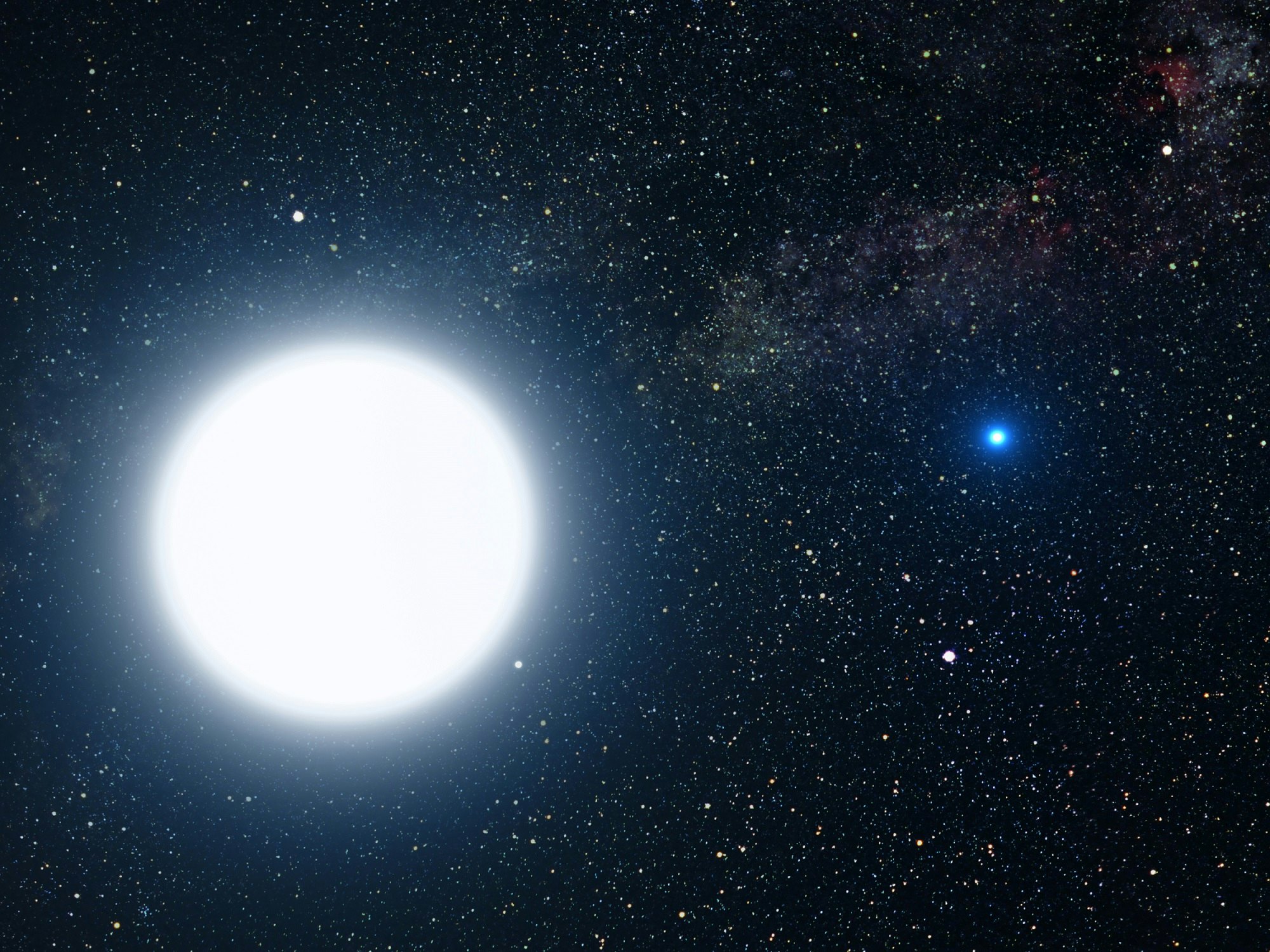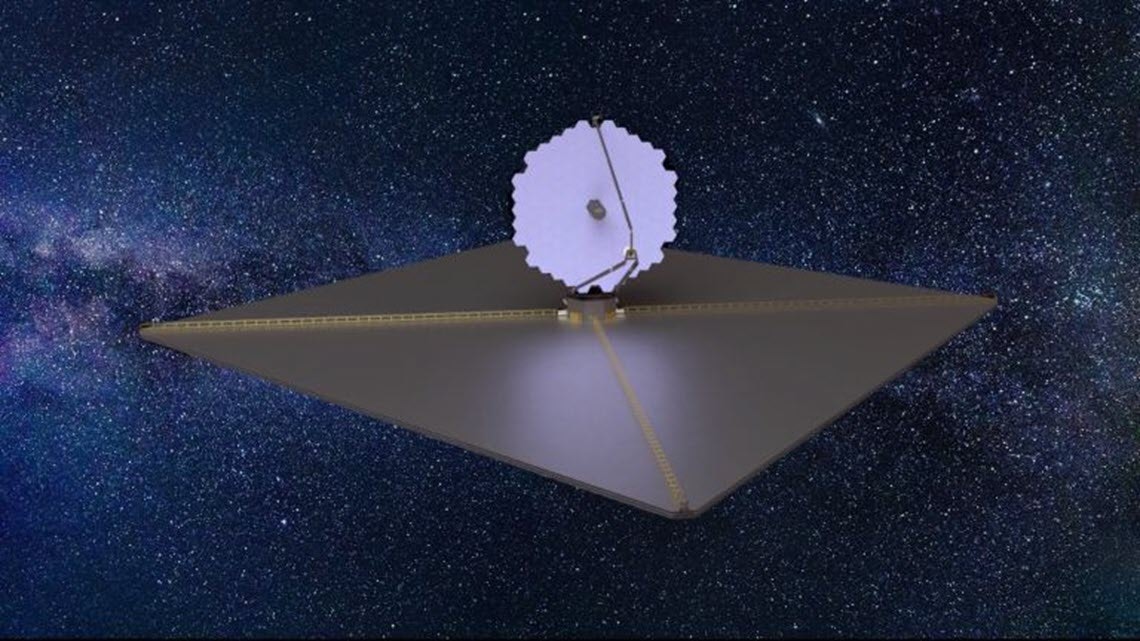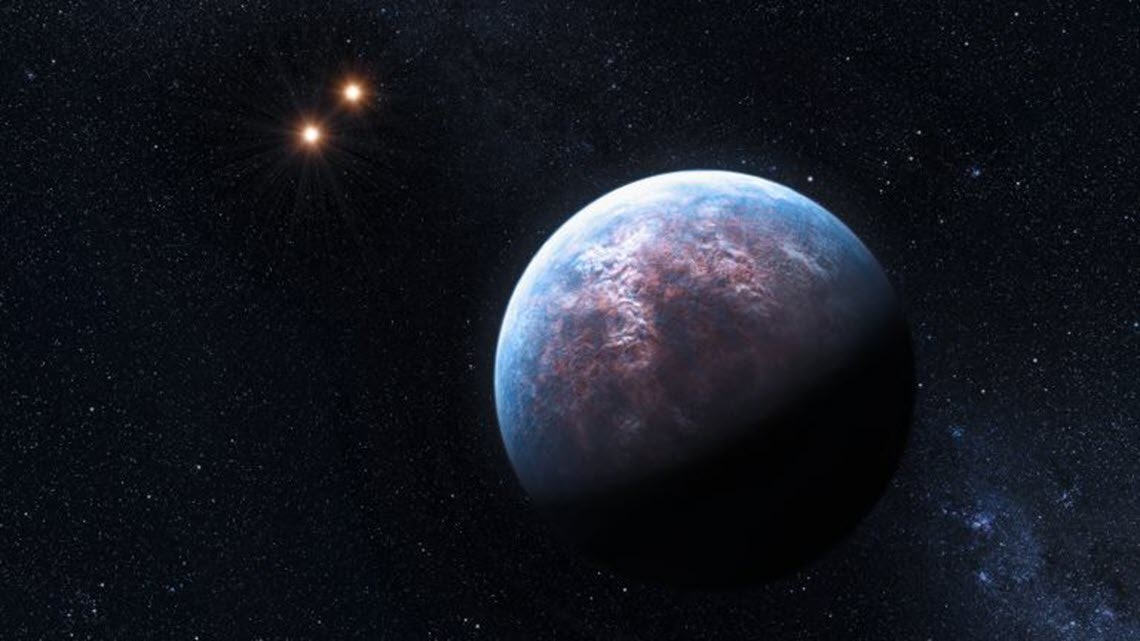
Fans of Star Trek were over the Moon when, in 2018, astronomers with the Dharma Planet Survey (DPS) announced the possible detection of 40 Eridani b, an extrasolar planet in the star system 40 Eridani. Located just 16.3 light-years away, this triple-star system happens to be where the planet Vulcan was located in the popular franchise.
Based on radial velocity measurements of the system’s primary star (40 Eridani A), the discovery team estimated that “Vulcan” was a rocky planet several times the mass of Earth (a Super-Earth) with an orbital period of 42 days or so.
The existence of this exoplanet has remained a controversial subject ever since. A study released in 2021 concluded that the signal was a false positive, but the debate remained open.
Now, according to a new study by an international team of researchers, the detection of 40 Eridani b was a false positive that astronomers mistook for an exoplanet. The study was part of an archival review of exoplanets to identify promising candidates for follow-up studies. So while “Vulcan” is currently off the table, these results could lead to other exciting discoveries in the coming years.
A false positive

The study, which was recently accepted for publication in The Astronomical Journal, was conducted by researchers from the NASA Exoplanet Science Institute (NExScI), NASA’s Jet Propulsion Laboratory, NASA’s Ames Research Center, the Weizmann Institute of Science, the UCO/Lick Observatory, the Hamburg Observatory, the Cahill Center for Astronomy & Astrophysics, the Tsung-Dao Lee Institute, the Carnegie Institution for Science, the Australian Centre for Astrobiology, and multiple universities and research institutes in the U.S., Australia, and China.
The study focused on exoplanet candidates identified through the Radial Velocity Method (RV) that were part of the list maintained by the NASA/NSF Extreme Precision Radial Velocity Working Group. This method consists of monitoring stars for signs of motion back and forth, a possible indication of orbiting planets that are gravitationally interacting with them.
The purpose was to identify exoplanets for follow-up observations by next-generation space telescopes like the Habital Explonet Observatory (HabEx), the Large UV/Optical/IR Surveyor (LUVOIR), and Starshade Rendezvous missions.
These missions will have the resolution and sensitivity to study smaller, rocky exoplanets orbiting closer to their suns (where Earth-like planets are expected to reside) using the Direct Imaging Method (DI). This method uses a coronagraph to block out a star’s brightness so that any light reflected from the atmospheres of orbiting planets will be visible.
This light can then be analyzed using spectrometers to determine the atmosphere’s chemical composition, allowing astronomers and astrobiologists to place tighter constraints on the planet’s habitability.
In some cases, astronomers may even be able to detect the red vegetation edge — infrared spectra that indicate photosynthesis on the surface. These studies are consistent with the objectives outlined in the Astro2020 Decadal Survey, which call for a 6-meter (~20 ft) infrared, optical, and ultraviolet (IR/O/UV) space telescope to search for rocky exoplanets (dubbed the Habitable Worlds Observatory).
To prepare for these searches, the international team led by Katherine Laliotis, a graduate fellow at Ohio State University (OSU), thoroughly vetted the list of RV planets to maximize the potential for scientific returns. As they state in the study:
“The stars that are chosen for a future DI mission must meet criteria related to their [effective temperature] Teff, brightness (e.g., Vmag), luminosity, multiplicity, and distance from Earth. Of primary importance is the maximum separation that a potentially habitable planet can achieve in its orbit around its star, as seen from Earth.”
To date, the RV method remains the second-most popular means of detecting potential signals of exoplanets. Of the 5300 exoplanets discovered, more than 1,000 (19.4 percent) were detected or confirmed using this method.
Unfortunately, RV also has some drawbacks that can lead to false positives. With certain types of stars, the surrounding gas envelope will expand and contract, creating the illusion that the star is moving. The same is true for stars with “bright spots” on their surface, which will produce variability in the spectrum consistent with the star’s rotation.
This has proven to be the case with 40 Epsilon A b, which had an assumed orbital period close to the star’s predicted rotational period — 37 to 43 days. The research team claimed that the best explanation for this was the presence of an exoplanet but also conceded that it was possible what they detected was a rotation signal.
However, they could not obtain an accurate assessment of 40 Epsilon A’s rotation at the time, so the results were inconclusive. Based on all the data obtained from the system to date, Laliotis and her colleagues concluded that the signal was due to stellar activity.
This is indicated, they wrote, by the close correlation between the signal and the (now) well-constrained rotational period of the star:
“Looking closely at the periodogram, we note that the 37-day period signal is extremely close to the yearly alias of the 42-day signal and report it as such. The 365-day signal is likely driven by the window function of this star as the phase folded fit makes clear that a significant (>25 percent) portion of the orbital phase space is unpopulated due to seasonal observing constraints. We, therefore, classify this as a false positive signal.”

In addition to ruling out the existence of “Vulcan,” the study also concludes that several other RV signals were likely false positives. These include 82 Eridanus c, a rocky Super-Earth orbiting a Sun-like star about 19.8 light-years from Earth. A signal that coincided with an orbital period of 40 days was reported in 2011 but has since been attributed to the star’s rotational period.
There’s also HD 85512, a K-type (orange dwarf) star 37 light-years from Earth, where another super-Earth (HD 85512 c) was reported in 2011.
The predicted orbital period (54.43 days) is also very close to peak RV measurements (51 to 58 days). Finally, there’s HD 114613 b, a Saturn-like gas-giant reported in 2014 around a Sun-like star 66.7 light-years from Earth.
Silver linings
Given the overlap between the 3,827-day signal and the star’s rotational period (and the fact that it has not been detected since), Latiolis and her colleagues attribute this signal to the star’s long-period magnetic cycle. But it wasn’t all bad news and false positives — the study also confirmed the existence of two candidates.
This includes a previously-detected exoplanet in HD 192310, another K-type orange dwarf located 28.7 light-years away. In 2011, two Neptune-like candidates were reported in this system based on RV Data, and several more signals have been detected since. According to Laliotis and her colleagues, the signal designated HD 192310 IV is likely to be an exoplanet with an orbital period of about 24.5 days. The second signal, HD 146233 III (18 Scorpii), corresponds to an exoplanet around a Sun-like star 46.1 light-years away with an orbital period of close to 20 days.
Ah well. You win some. You lose some. Or, in this case, you lose one science fiction planet. You gain two more with an indeterminate science fiction value. And in the coming years, thanks to next-generation telescopes and studies that narrow the search for promising candidates, we could find exoplanets that exceed all our sci-fi-based expectations!
This article was originally published on Universe Today by Matt Williams. Read the original article here.







